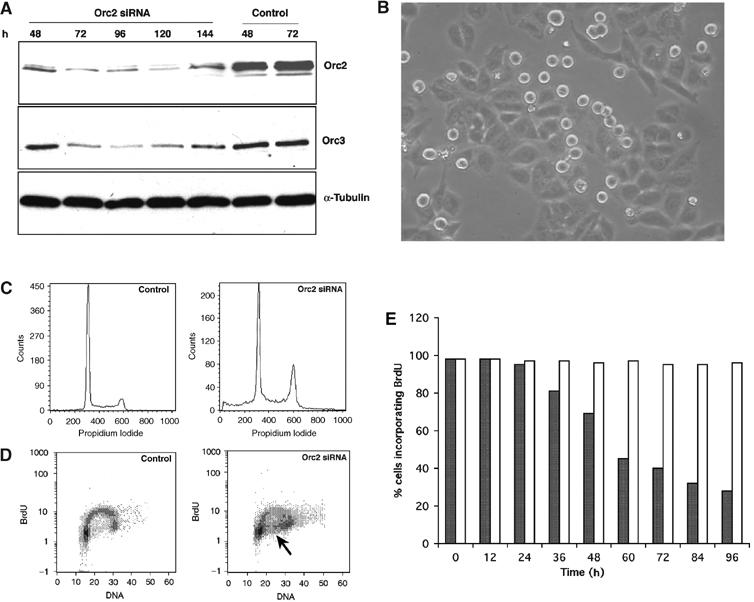Abstract
Correction to: The EMBO Journal (2004) 23, 2651–2663. doi:10.1038/sj.emboj.7600255
Due to an author error, the X-axis in Figure 3D was mislabelled as INA instead of DNA. The correct figure is reproduced below.
Figure 1.

Orc2 depletion has dual execution points. (A) Immunoblot of whole-cell extract from cells transfected with Orc2 siRNA duplex or control luciferase siRNA and harvested at different time points. Cells were transfected at 0, 24 and 48 h at about 20% starting confluence. Efficacy of RNAi was assessed by immunoblotting to detect Orc2. a-Tubulin levels were used as loading controls. Orc3 levels were also modulated and, with the reappearance of Orc2 in the cells at 144 h, the levels of Orc3 also increased. (B) Orc2 depletion at 72 h post siRNA shows morphologically two distinct populations of cells: the flat adherent cells and the rounded mitotic cells. (C) DNA content of control and Orc2 siRNA-treated cells at 48 h was determined by flow cytometry. Note a broader S phase and an increase in G2/M in Orc2 siRNA-treated cells. (D) Two-dimensional FACS to assess BrdU incorporation (10 min pulse) and DNA content by propidium iodide (PI) was assessed by flow cytometry in control and Orc2-depleted cells at 72 h. Note an increase in G2/M and accumulation of cells in S phase without incorporation of BrdU (see arrow) in Orc2-depleted cells. (E) Histogram showing the percentage of cells incorporating BrdU during a 24 h label at different time points after transfection, with Orc2 (gray bars) or luciferase control (white bars) siRNA duplexes. BrdU incorporation was allowed for 24 h to ensure that all cells had a chance to pass through at least one S phase.
The authors apologize for this error.


